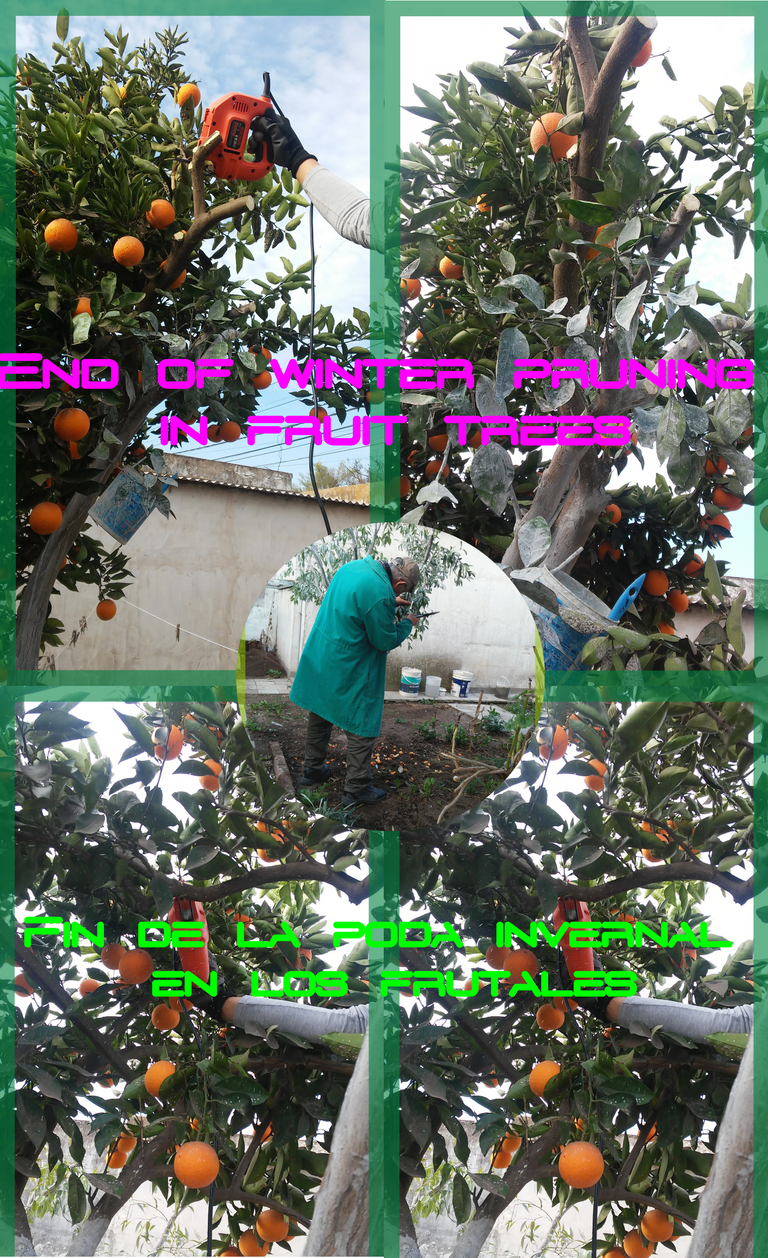
Of the two orange plants that I own, one bears fruit earlier than the other. It is the variety called "navel orange", it is seedless and has an exquisitely sweet flavor. Can not explain. You have to try it to describe it accurately. In Spain they are known by the name of "navelinas" and they owe their name to the English translation of the word navel, which is precisely "navel". In English they are known by the name "Orange navel".
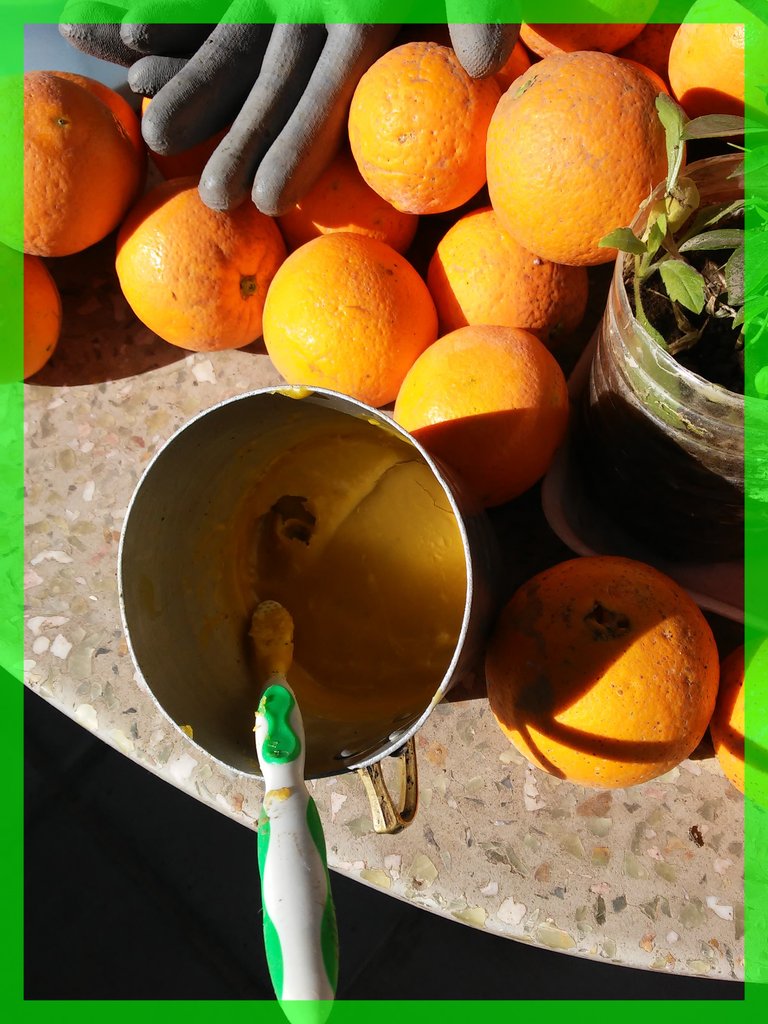
The pruning work done on this plant I have already explained in detail in this post the second I published on #HIVE and the first at @hivegarden. On that occasion I explained to them that I had been forced to carry out severe and radical pruning on the plant. Because it had been attacked very aggressively by the so-called "white cochineal or cottony mealybug" that sticks to the lower part of the leaves -those that are not exposed to the sun- and feeds on the plant's sap. As if this were not enough, it attracts the ants that feed on it and then also attack the plant.
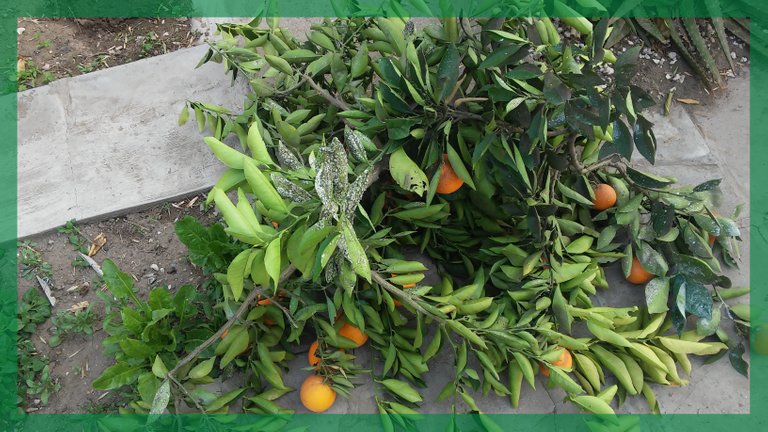
The second orange tree plant that I am going to talk about in this post is another variety, more rustic, with a thicker skin, less sweet but also more resistant. It had also been very aggressively attacked by this parasite and I was also forced to prune it to eliminate the plague. On the first plant, the first little leaves are already beginning to appear, which is why I was forced to do an early pruning. This second plant is a later fruiter and gave me enough time to work on pruning both.
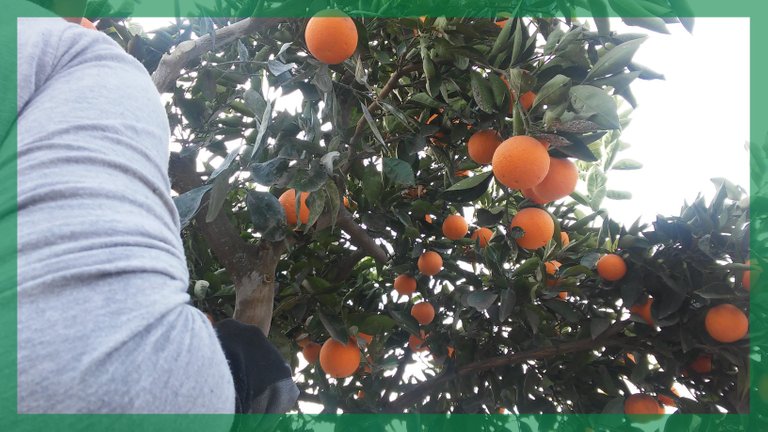
We are in the month of September and in this part of the hemisphere spring is approaching, therefore in a month we will be able to see the results and rejoice (or not) for the work done.
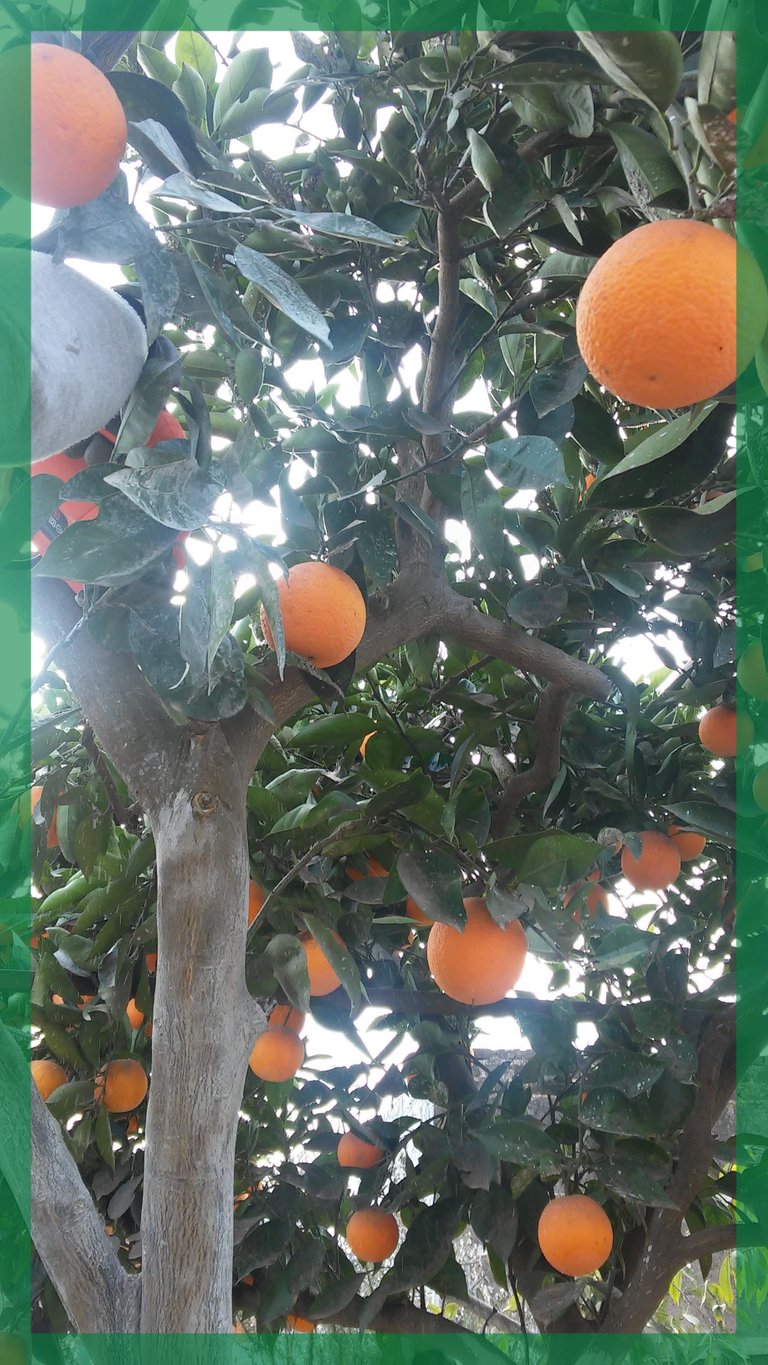
I have taken some photos of the pruned branches so you can see how this pest attacks fruit trees. Last year I tried to combat them with an organic and natural pesticide (I do not use chemical pesticides that damage the environment and human health so much) but the results were not what I expected.
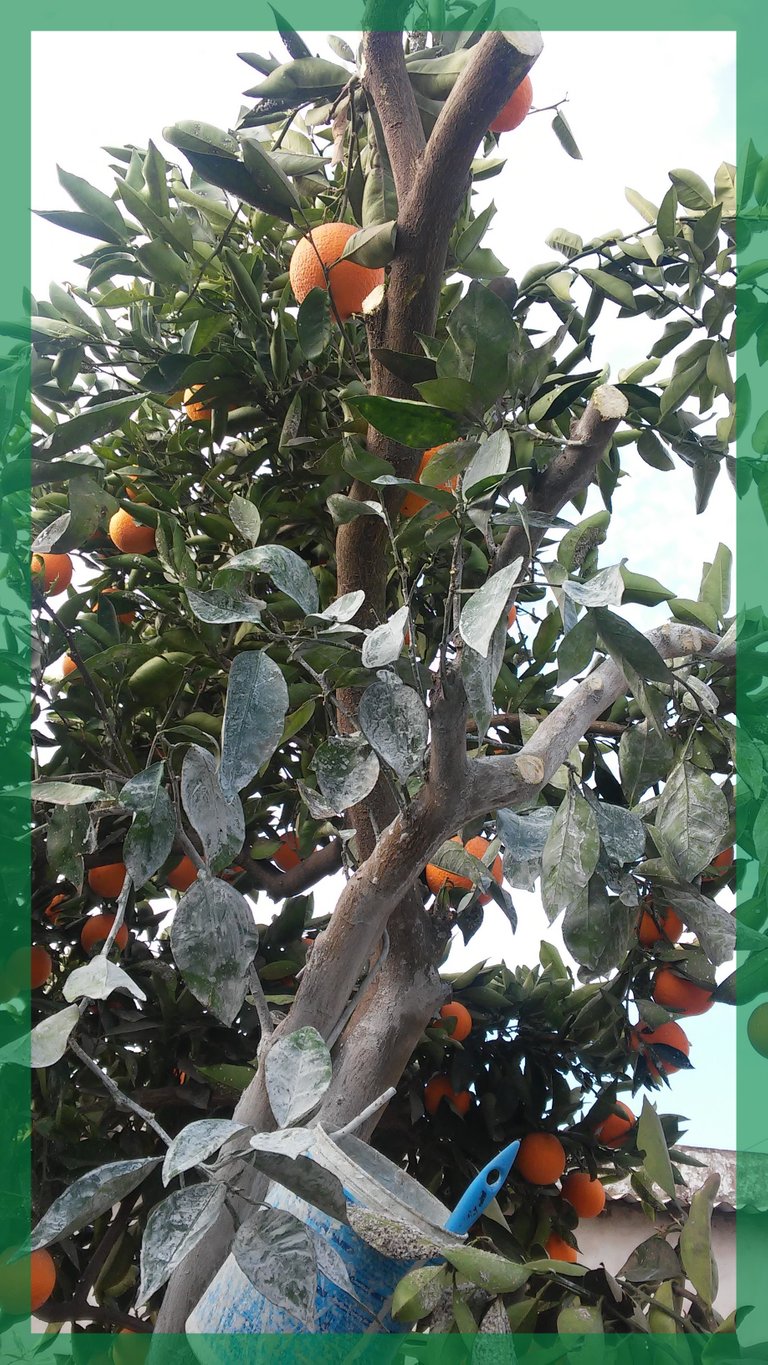
This year I added potassium soap and neem oil to the copper sulphate and quicklime, making a compound that, filtered, can be applied with a sprayer without any problems. The idea is an initial application with a higher concentration of potassium soap and neem oil after pruning and then periodic applications every fifteen days with a lower concentration of the aforementioned elements.
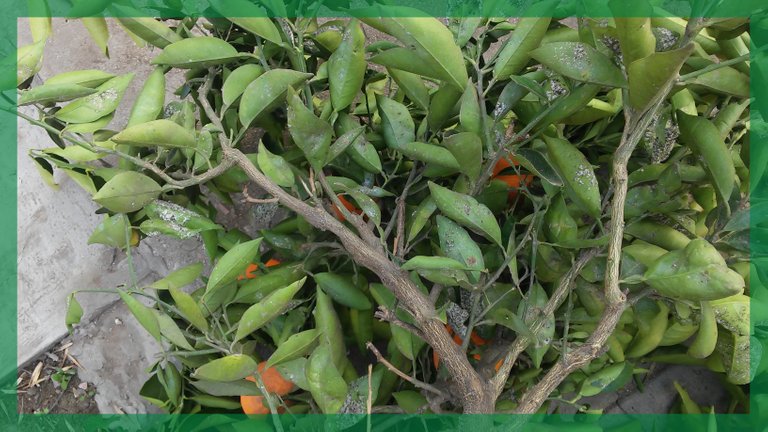
For the pruning I am using a normal electric saw, not professional but the most common for family use, since it allows me to make a clean cut that I then cover with beeswax -the honeycomb wax that you can get for free from any beekeeper friend-. It cannot be ingested, it is not honey, it is simply the wax that the bees themselves use for their food. It is slightly diluted in a container so that it becomes a paste and when it is barely warm, before hardening, it is applied to the cut made. It prevents the entry of parasites that will directly attack the lymph of the plant.

Little by little, the pruning is taking shape, despite the fact that the person who planted these fruit trees -it wasn't me- had no idea and planted two fruit trees (an orange and a mandarin) very close to each other. So I must direct the pruning towards the outside so that they don't "choke" each other.
You can see some very small oranges in relation to the oranges of the plant that I mentioned in the previous post. This is also due to the interference of pests and excessive foliage, making it difficult for the sun's rays to enter. Indeed, the branches exposed directly to sunlight have developed quite acceptable oranges in terms of size.

I am not going to dwell too much on the components of the pesticide, since I made a post especially dedicated to it, explaining the concentration of elements necessary to obtain a good result. When the leaves begin to develop, it is very important to continue spraying the foliage every fortnight until the fruit begins to take on its classic orange color. A quick but thorough pass of the branches from bottom to top and top to bottom. This and the neem oil with its residual power will prevent pests from surviving and hatching on the leaves.
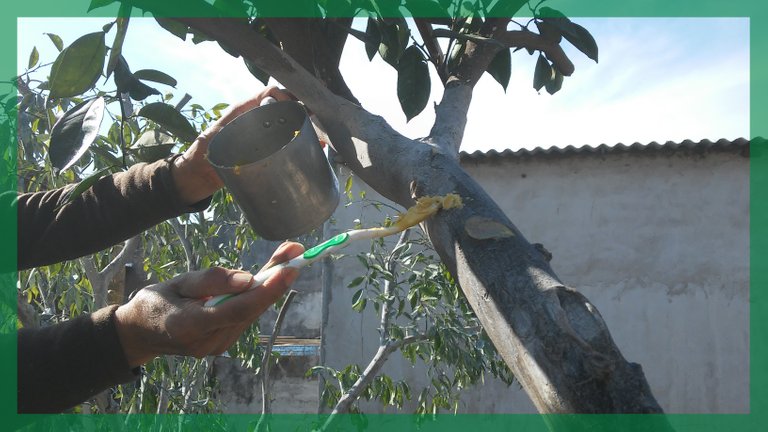
The pruning work is finished. I check all the cuts made and I see that in general the wounds have healed very well and there should be no invasion of pests or parasites through them.
On the other hand, the plants have a sufficient number of leaves left so that they can breathe freely and not demand too much of the sap that circulates inside the trunk while the process of growth of the new leaves and subsequent flowers begins.
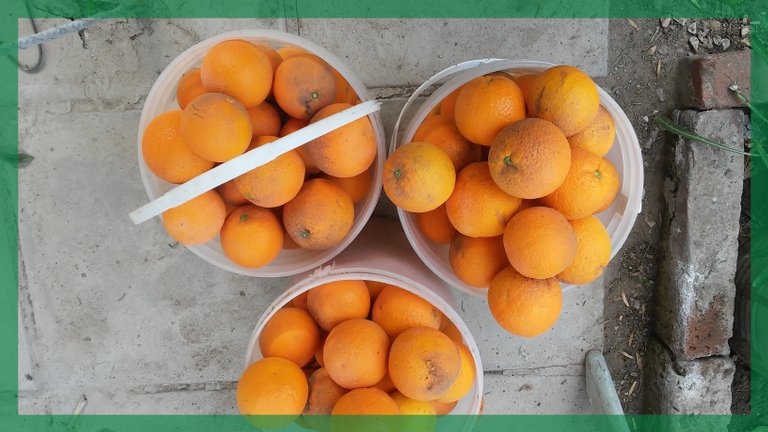
I have treated the entire plant - trunk, branches and leaves - first with copper sulfate diluted in quicklime and then dusted it with potassium soap and neem oil both diluted.
The plant should be quite protected from future pest attacks, although I will not let my guard down and continue to monitor, especially during the early spring, since the leaves are very soft and have less defenses.
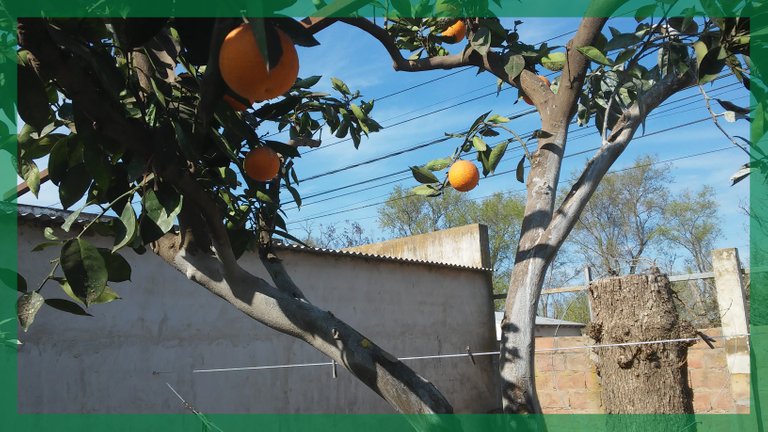
In a couple of months I will tell you again how we have been doing: me and the plants, the amount of fruit I have picked this year makes me worry a lot about making them live in the best possible way: noblesse oblige!
In the meantime, read on!
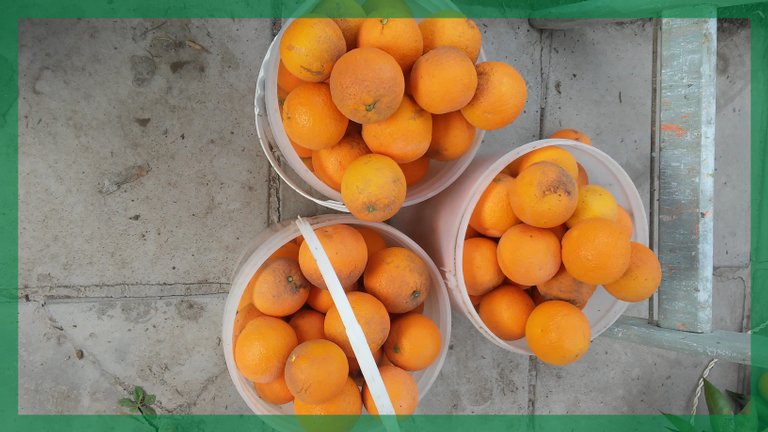

De las dos plantas de naranjo que poseo una da los frutos en forma más temprana que la otra. Es la variedad denominada "naranja de ombligo", no tiene semilla y es de un sabor exquisitamente dulce. No se puede explicar. Hay que probarla para describirla con exactitud. En España se las conoce con el nombre de "navelinas" y deben su nombre a la traducción en inglés de la palabra ombligo que es precisamente "navel". En inglés se las conoce con el nombre de "Orange navel".
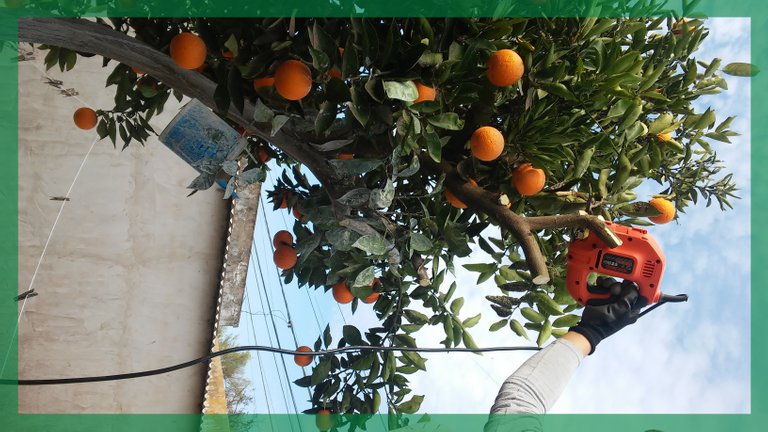
El trabajo de poda hecho en esta planta ya lo expliqué detalladamente en este post el segundo que publiqué en #HIVE y el primero en @hivegarden. En esa oportunidad les expliqué que me había visto obligado a efectuar una poda severa y radical en la planta. Porque había sido atacada con mucha agresividad por la llamada "cochinilla blanca o cochinilla algodonosa" que se pega en la parte inferior de las hojas -las que no están expuestas al sol- y se alimenta de la savia de la planta. Por si esto fuera poco atrae a las hormigas que se alimentan de ella y luego atacan también la planta.

La segunda planta de naranjo de las que les voy a hablar en este post es otra variedad, más rústica, de cáscara más gruesa, menos dulce pero también más resistente. Igualmente había sido atacada con mucha agresividad por este parásito y también me vi obligado a podarla para eliminar la plaga. En la primera planta ya están comenzando a aparecer las primeras hojitas por ese motivo me vi obligado a una poda tempranera, anticipada. Esta segunda planta es de fructificación más tardía y me dio el tiempo suficiente para trabajar en la poda de ambas.
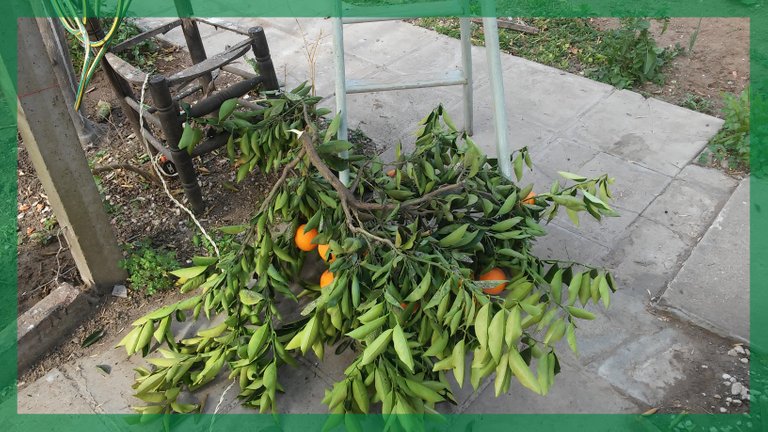
Estamos en el mes de setiembre y en esta parte del hemisferio se acerca la primavera, por lo tanto dentro de un mes podremos ver los resultados y alegrarnos (o no) por el trabajo hecho.
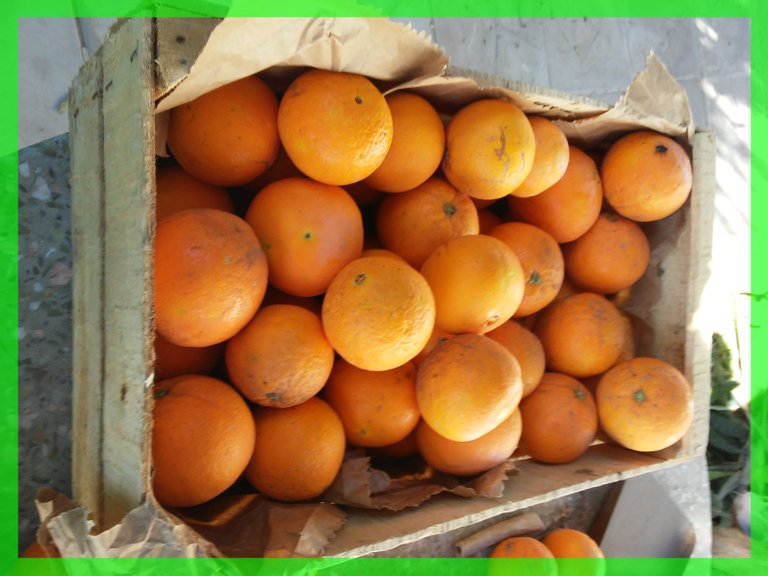
He sacado algunas fotos de las ramas podadas para que puedan ver el modo en que esta plaga ataca los frutales. El año pasado traté de combatirlas con un plaguicida orgánico y natural (no uso por cuestión de principios los plaguicidas químicos que tanto dañan el medio ambiente y la salud humana) pero los resultados no fueron los esperados.
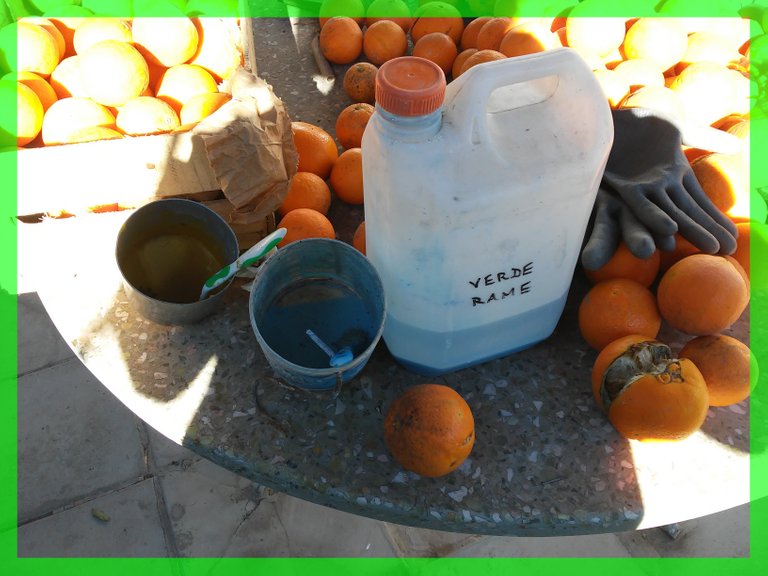
Este año al sulfato de cobre y cal viva le agregué jabón potásico y aceite de neem haciendo un compuesto que filtrado lo puedo aplicar sin inconvenientes con un pulverizador. La idea es una aplicación inicial con una concentración mayor de jabón potásico y aceite de neem después de la poda y luego aplicaciones periódicas cada quince días con una concentración menor de los elementos citados.
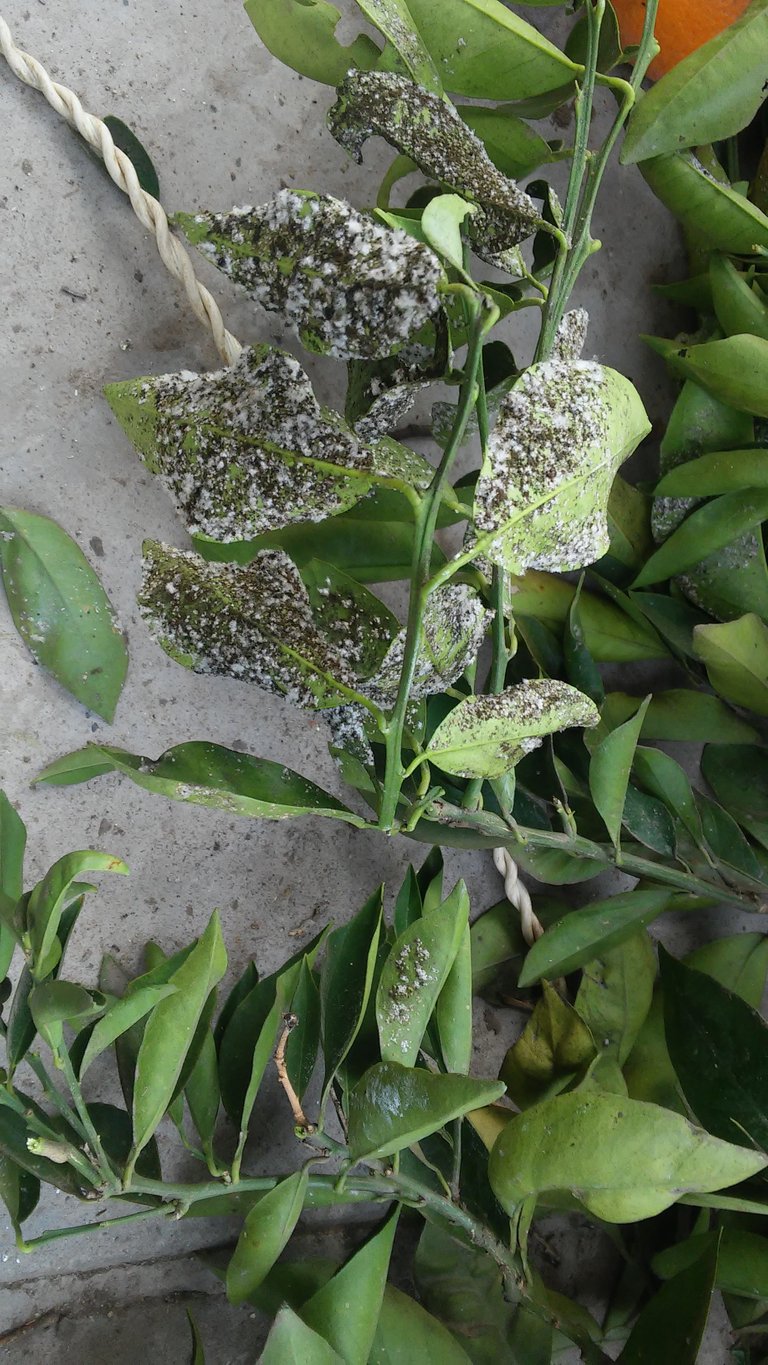
Para la poda estoy utilizando una sierra eléctrica normal, no profesional sino las más comunes de uso familiar, ya que me permite efectuar un corte neto que luego cubro con cera de abejas -la cera del panal que pueden obtener gratuitamente de cualquier amigo apicultor-. No se puede ingerir, no es miel, es simplemente la cera que las mismas abejas usan para su alimento. Se diluye ligeramente en un recipiente para que quede hecha una pasta y cuando está apenas tibia, antes de endurecerse, se aplica al corte efectuado. Evita el ingreso de parásitos que van a atacar directamente la linfa de la planta.
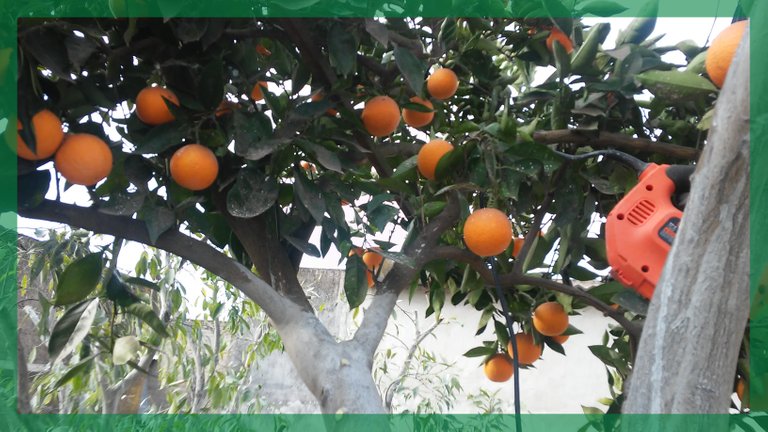
De a poco la poda va tomando forma, a pesar de que quien planto estos frutales -no fui yo- no tenía mayormente idea y planto dos frutales (un naranjo y un mandarino) muy cerca uno de otro. De manera que debo orientar la poda hacia el externo para que no se "ahoguen" entre ellos mismos.
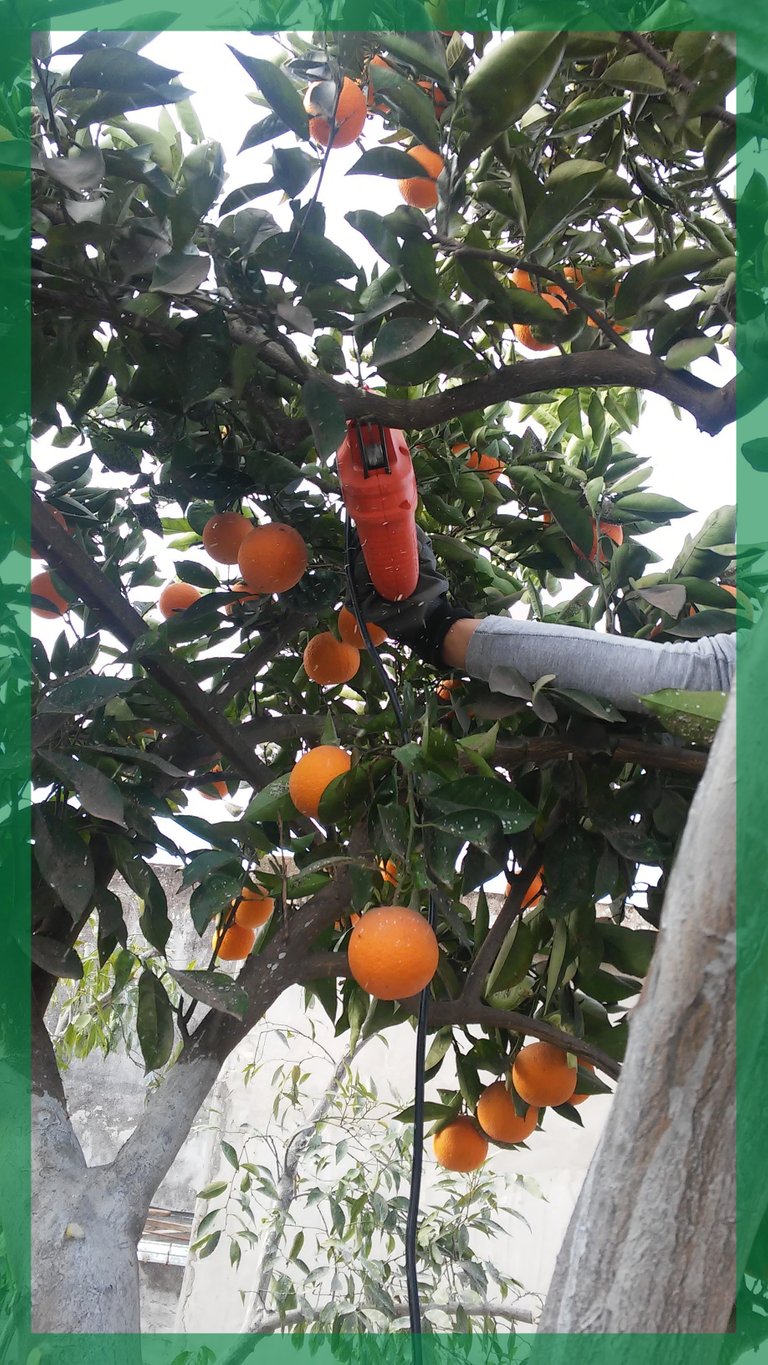
Pueden ver algunas naranjas muy pequeñas en relacion a las naranjas de la planta que les citaba en el post anterior. Eso también se debe a la intromisión de las plagas y a un excesivo follaje dificultando la entrada de los rayos del sol.
En efecto, las ramas expuestas directamente a la luz solar han desarrollado naranjas bastante aceptables en cuanto al tamaño.
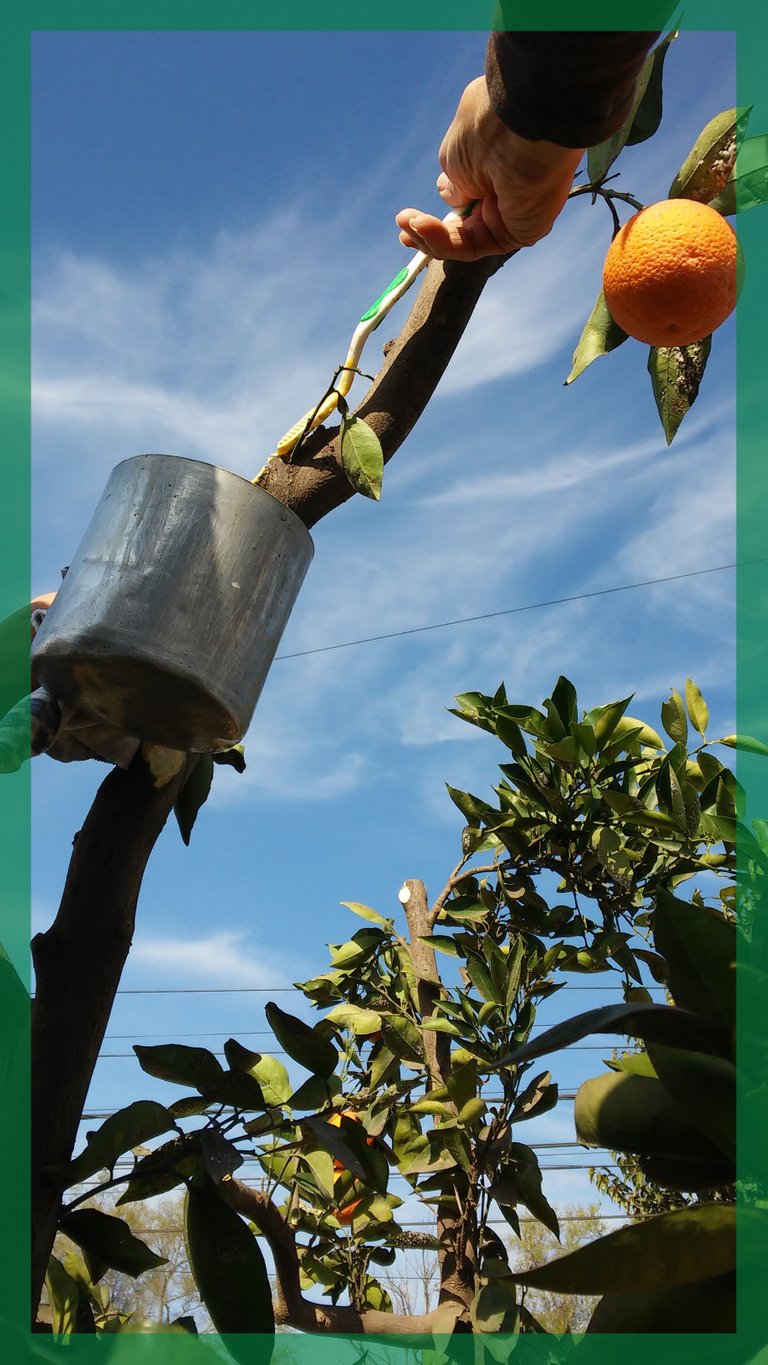
No me voy a extender demasiado en los componentes del plaguicida, ya que hice un post especialmente dedicado a él, explicando la concentración de elementos necesarios para obtener un buen resultado. Cuando comienzan a desarrollar las hojas es muy importante seguir pulverizando el follaje cada quince días hasta que el fruto ya comienza a tomar su clásico color naranja. Una pasada rápida pero meticulosa de las ramas de abajo hacia arriba y de arriba hacia abajo. Esto y el aceite de neem con su poder residual evitarán que las plagas puedan sobrevivir e incubar en las hojas.
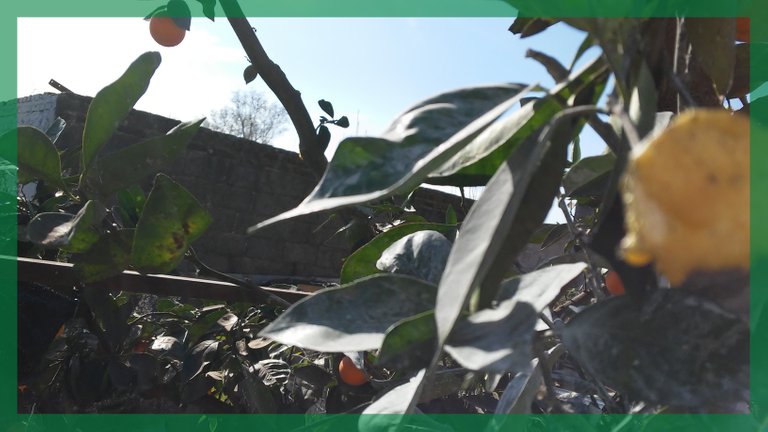
El trabajo de poda está terminado. Controlo todos los cortes efectuados y veo que en líneas generales las heridas han cicatrizado muy bien y no tendría que haber invasión de plagas o parásitos a través de ellos.
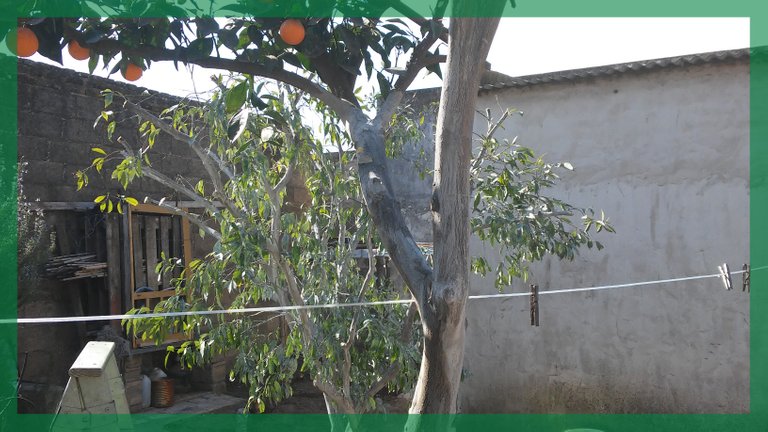
Por otro a las plantas le han quedado un número suficiente de hojas para que puedan respirar con libertad y no exigir demasiado a la savia que circula dentro del tronco mientras se inicia el proceso de crecimiento de las nuevas hojas y posteriores flores.
He tratado toda la planta -tronco, ramas y hojas- primero con el sulfato de cobre diluido en cal viva y luego lo he espolvoreado con jabón potásico y aceite de neem ambos diluidos.
La planta debería estar bastante protegida de futuros ataques de plagas aunque no por eso voy a bajar la guardia y a seguir controlando, especialmente durante el inicio de la primavera, ya que las hojitas son muy blandas y tienen menos defensas.
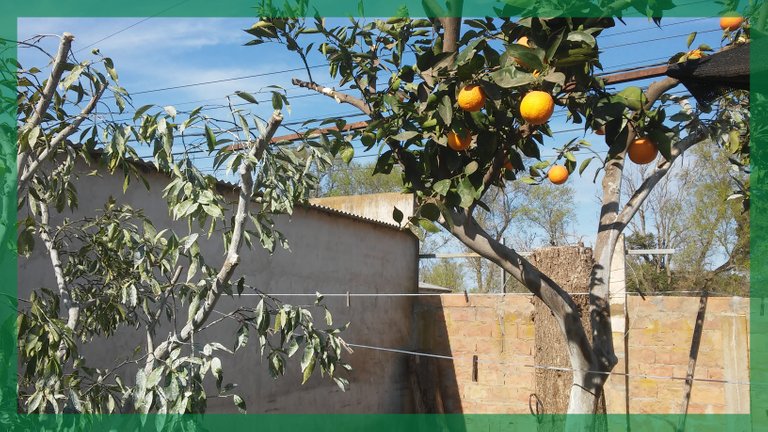
Dentro de un par de meses les vuelvo a contar como nos ha ido: a mí y a las plantas. ¡La cantidad de fruta que he recogido este año hace que me preocupe y mucho en hacerlas vivir de la mejor manera posible: nobleza obliga!
Mientras tanto, nos seguimos leyendo!

Translated with / Traducido con: www.DeepL.com/Translator (free version)
Own images. Text Separator / Imágenes propias. Separador de Textos : The Peak Studio



